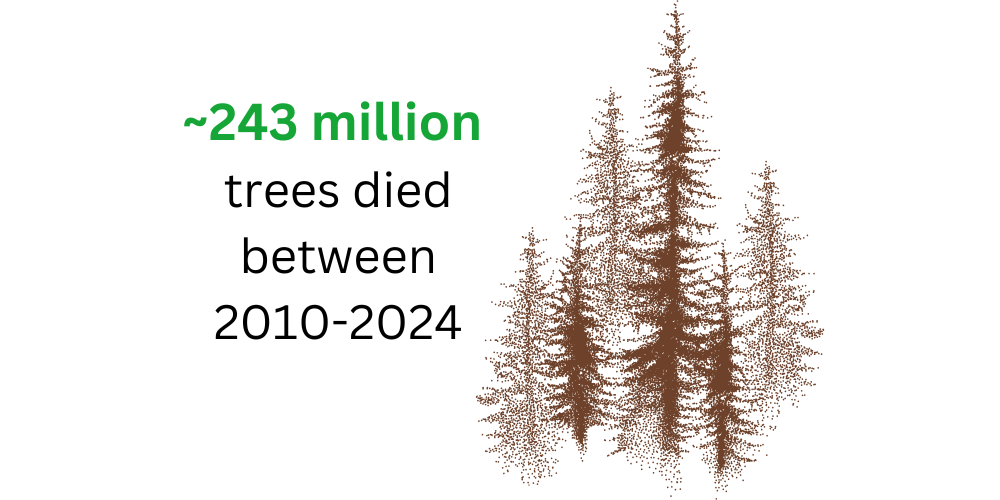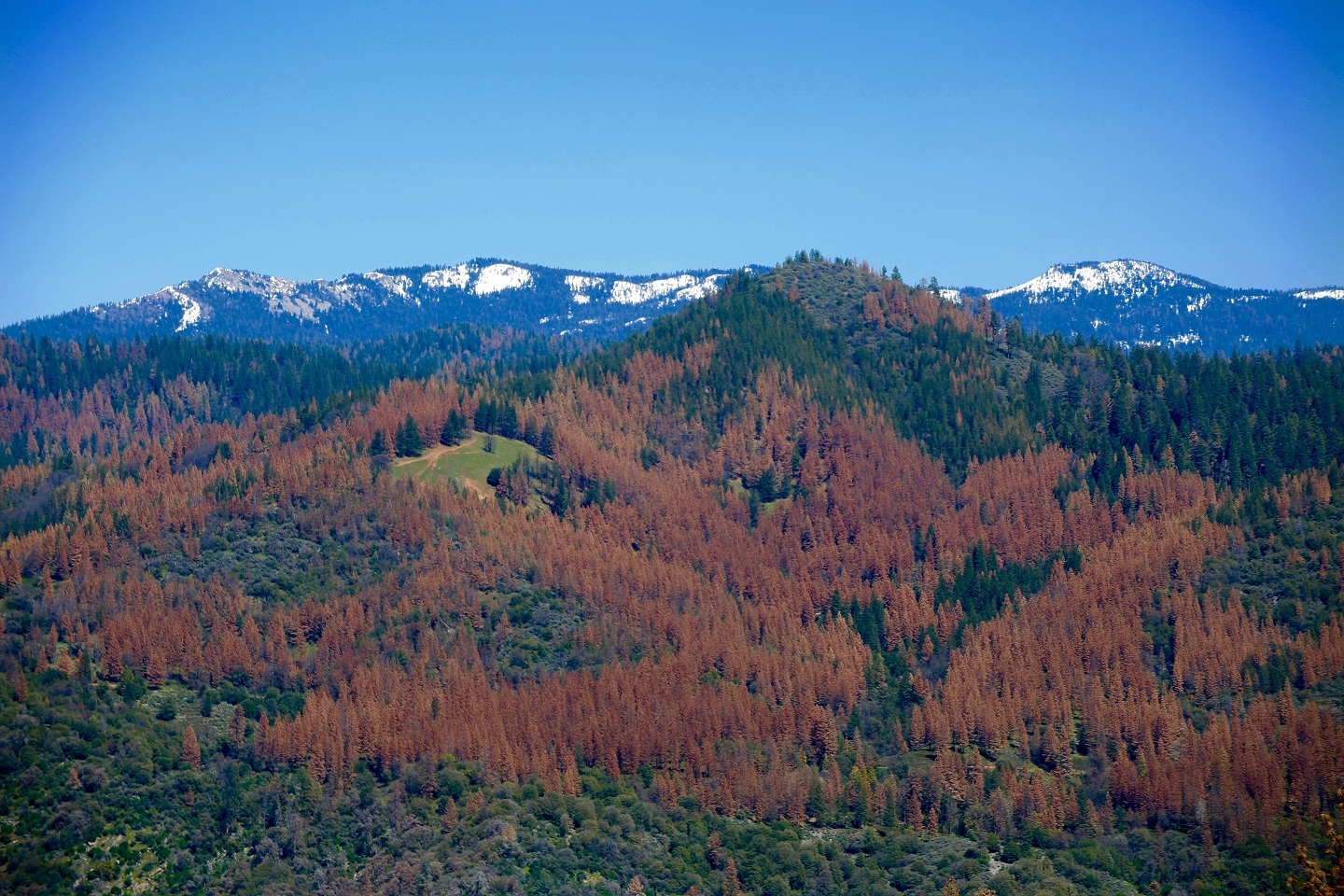Forest Tree Mortality

Credit: Florence Low//California Department of Water Resources
Forests occupy almost one-third of California’s landscape. They are a vital resource for the state, providing ecological, economic, and aesthetic benefits. Tree mortality often involves a chain of events and a range of both climate and non-climate factors. For more information, download the Forest Tree Mortality chapter.
What does the indicator show?
Estimated number of dead trees
This graph shows estimates of the number of dead trees each year (in millions), based on aerial detection surveys. (Note: These surveys were suspended during 2020 due to the COVID-19 pandemic).
- In 2010, the number of tree deaths in California forests was about 3 million. The number peaked in 2016, when an estimated 62 million trees died.
Why is this indicator important?

- Tree deaths reduce the ability of forests to serve multiple functions, including providing habitat for wildlife; purifying water and air; producing wood and other raw materials; storing carbon; and supporting cultural and recreational uses. California’s Tribes have been uniquely impacted by the loss of trees that are significant to their culture, such as oaks and pine trees.
- Increased tree mortality, in concert with warming temperatures and reduced moisture can accelerate changes in forest composition – that is, the types of tree species that make up the state’s forests. For example, as conifers die, they are replaced by hardwood trees.
- Dead and drying vegetation serves as fuel, increasing the risk of larger wildfires.
What factors influence this indicator?
- Tree mortality is a complex process that involves a wide range of factors, including drought, wildfire, insects, diseases, and forest management practices.
- Global trends in tree mortality over the past two decades have been linked to increasingly dry and hot climatic conditions. These conditions also make trees more vulnerable to attacks by beetles and to diseases such as Sudden Oak Death. Coincidentally, warming temperatures have enhanced the growth and reproduction of these insects and pathogens.
Forest management practices, including the suppression of wildfires, have led to denser forests where competition among trees for water has left them more susceptible to drought and beetle infestations.
Dead trees in the Sierra Nevada forest, photo taken April, 2016. Forests in California’s Sierra Nevada Mountains were most affected by tree mortality.

Credit: USFS Pacific Southwest Forest
Additional resources
- U.S. Forest Service, Pacific Southwest Region. Aerial Detection Monitoring: Aerial Survey Results (multiple years)
